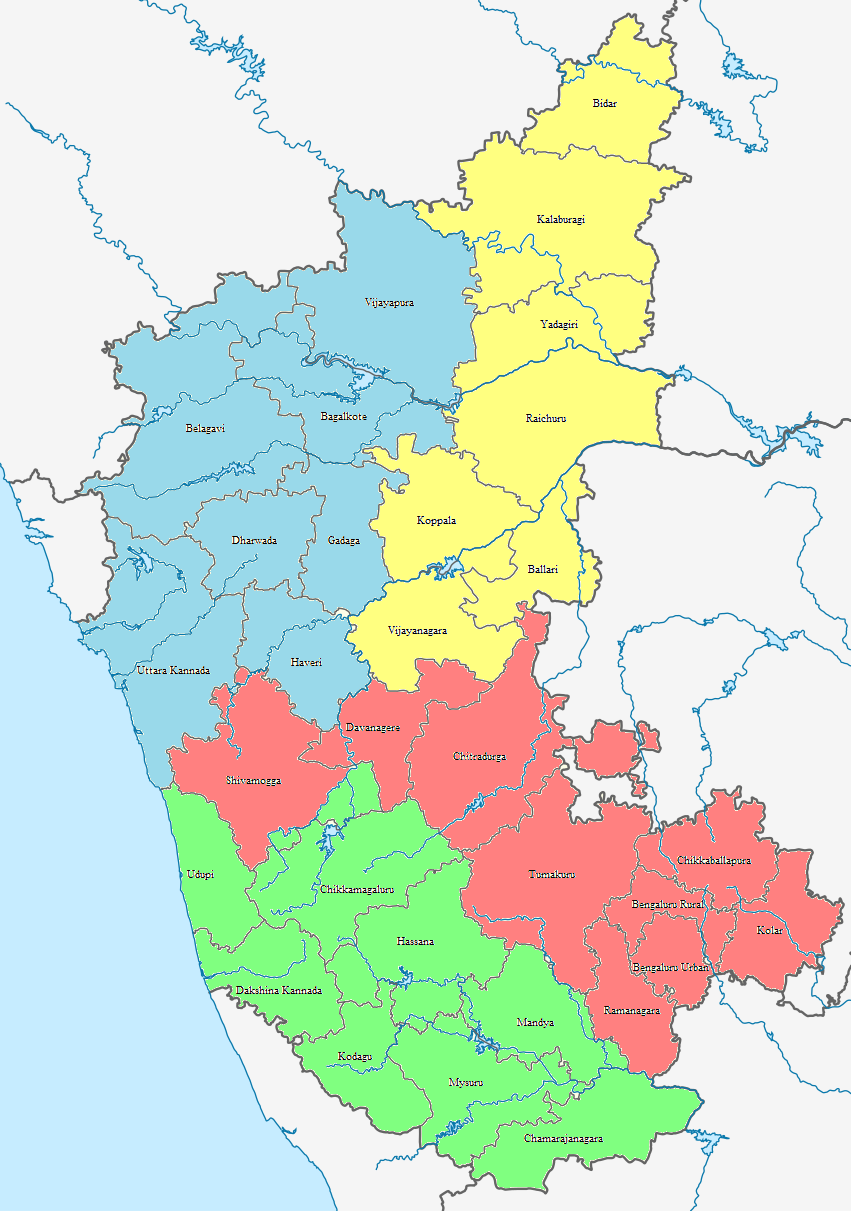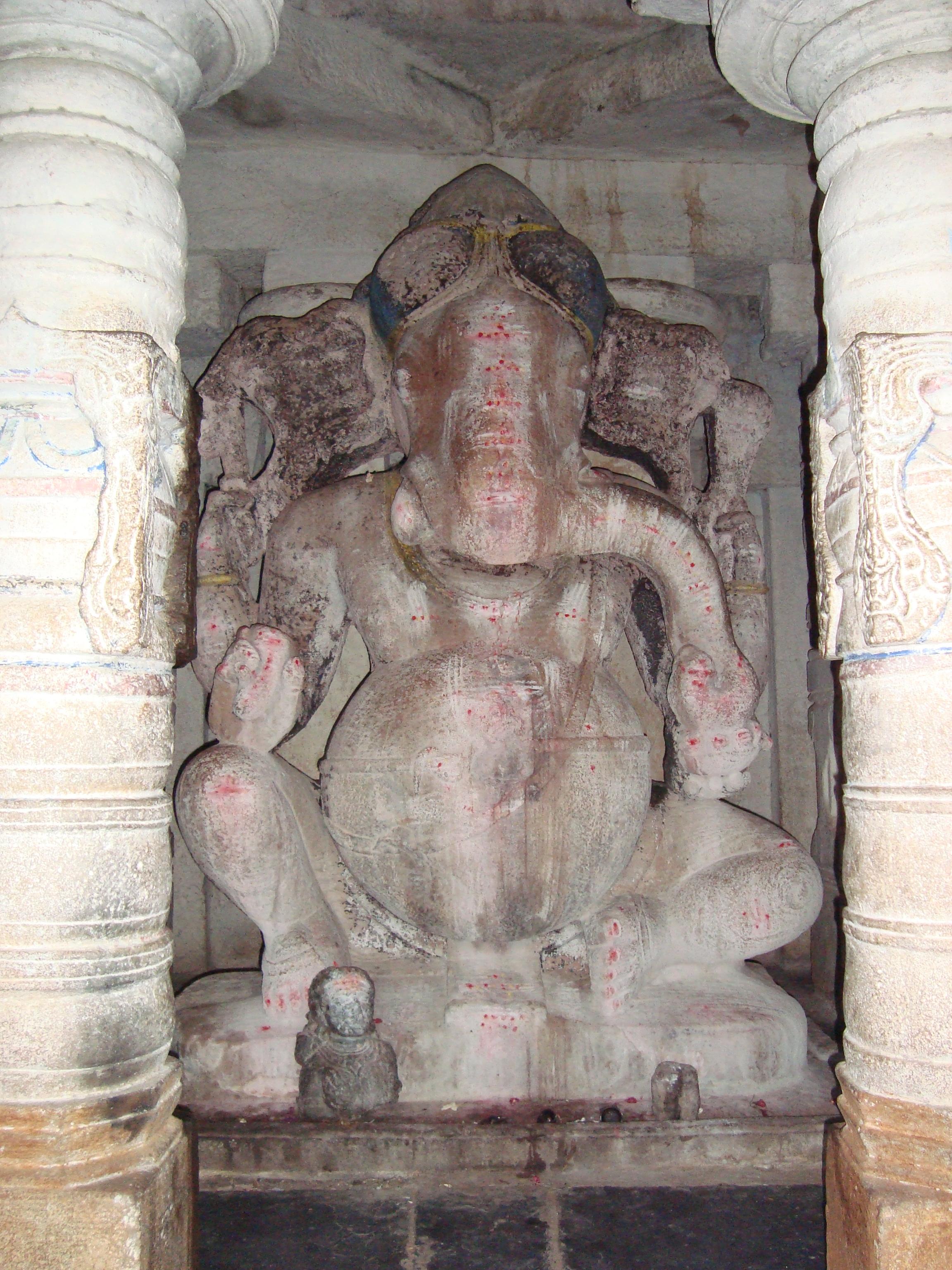|
Haveri District
Haveri is a district in the state of Karnataka, India. As of 2011, it had a population of 1,597,668, out of which 20.78% were urban residents. The district headquarters is Haveri. Name of the place Haveri is derived from two Kannada words "Havu" which means snake and "keri" which means lake together "Havukeri". History Core area of Western Chalukya monuments includes the places Badami, Sudi, Annigeri, Mahadeva Temple (Itagi), Gadag, Lakkundi, Lakshmeshwar, Dambal, Haveri, Bankapura, Rattahalli, Kuruvatti, Bagali, Balligavi, Chaudayyadanapura, Galaganatha, Hangal. It was possible because Soapstone is found in abundance in these areas. Haveri also comes under Core area of Western Chalukya architectural activity. History of Haveri district dates to pre-historic period. About 1300 stone writings of different rulers like Chalukyas, Rastrakutas are found in the district. Bankapura Challaketaru, Guttavula Guttaru, Kadambas of Hangal and Nurumbad are some of the well ... [...More Info...] [...Related Items...] OR: [Wikipedia] [Google] [Baidu] |
List Of Districts Of Karnataka
The Indian State of Karnataka consists of 31 districts grouped into 4 administrative divisions. The state geographically has 3 principal regions: the coastal region of Karavali, the hilly Malenadu region comprising the Western Ghats, and the Bayaluseeme region, comprising the plains of the Deccan plateau. History It took its present shape in 1956, when the former states of Mysore and Coorg were merged with the Kannada-speaking districts of the former states of Bombay, Hyderabad, and Madras. Unified Mysore state was made up of ten districts, Bengaluru, Kolar, Tumakuru, Mandya, Mysuru, Hassana, Chikkamagaluru , Shivamogga, Chitradurga, and Ballari which had been transferred from Madras state to Mysore in 1953, when the new state of Andhra Pradesh was created out of Madras' northern districts. Coorg State became a district known as Kodagu, Dakshina Kannada was transferred from Madras State, Uttara Kannada, Dharwad, Belagavi, and Vijayapura from Bombay State. Bida ... [...More Info...] [...Related Items...] OR: [Wikipedia] [Google] [Baidu] |
Kannada
Kannada (; ಕನ್ನಡ, ), originally romanised Canarese, is a Dravidian language spoken predominantly by the people of Karnataka in southwestern India, with minorities in all neighbouring states. It has around 47 million native speakers, and was additionally a second or third language for around 13 million non-native speakers in Karnataka. Kannada was the court language of some of the most powerful dynasties of south and central India, namely the Kadambas, Chalukyas, Rashtrakutas, Yadava Dynasty or Seunas, Western Ganga dynasty, Wodeyars of Mysore, Nayakas of Keladi Hoysalas and the Vijayanagara empire. The official and administrative language of the state of Karnataka, it also has scheduled status in India and has been included among the country's designated classical languages.Kuiper (2011), p. 74R Zydenbos in Cushman S, Cavanagh C, Ramazani J, Rouzer P, ''The Princeton Encyclopedia of Poetry and Poetics: Fourth Edition'', p. 767, Princeton Unive ... [...More Info...] [...Related Items...] OR: [Wikipedia] [Google] [Baidu] |
Sudi, India
Sudi, is a panchayat town in the Gadag District of Karnataka, India. It is about 30 km from Badami, 12 km from Gajendragad and 3 km from Itagi Bhimambika temple. In the past it was an important town of the Kalyani Chalukyas during 1000 AD. It is notable for rare stone carved monuments like ''Twin towered temple, Mallikarjuna temple and nagakunda (large well built of stone and carvings)'', and few other structural temples. For long time these structures were abandoned, but recently they caught the eye of the Indian Archaeological Department (ASI - Archaeological Survey of India). History Sudi belongs to the core area of Western Chalukya architectural activity in modern Karnataka (particularly North Karnataka). ''Padevala Taila'' (son of Nagadeva), continued to serve under ''Satyashraya'' (succeeded his father Taila in 997 AD) and his mother ''Attiyabbe'' made a grant in ''1005 A.D''. Satyashraya had two daughters. ''Vradhamabbarasi'' and Akkadevi and one ... [...More Info...] [...Related Items...] OR: [Wikipedia] [Google] [Baidu] |
Badami
Badami, formerly known as Vatapi, is a town and headquarters of a taluk by the same name, in the Bagalkot district of Karnataka, India. It was the regal capital of the Badami Chalukyas from CE 540 to 757. It is famous for its rock cut monuments such as the Badami cave temples, as well as the structural temples such as the Bhutanatha temples, Badami Shivalaya and Jambulingesvara Temple, Badami, Jambulingesvara temple. It is located in a ravine at the foot of a rugged, red sandstone outcrop that surrounds Agastya lake. Badami has been selected as one of the heritage cities for HRIDAY - Heritage City Development and Augmentation Yojana scheme of Government of India. Nearest Railway Station is Badami Railway Station which is just 2 km from Badami city. Nearest Airport is Hubli Airport which is 109 km away from Badami. History Pre-historic and epic The Badami region was settled in pre-historic times, with evidence by megalithic dolmens. In the local tradition, the ... [...More Info...] [...Related Items...] OR: [Wikipedia] [Google] [Baidu] |
Western Chalukya
The Western Chalukya Empire ruled most of the western Deccan, South India, between the 10th and 12th centuries. This Kannadiga dynasty is sometimes called the ''Kalyani Chalukya'' after its regal capital at Kalyani, today's Basavakalyan in the modern Bidar District of Karnataka state, and alternatively the ''Later Chalukya'' from its theoretical relationship to the 6th-century Chalukya dynasty of Badami. The dynasty is called Western Chalukyas to differentiate from the contemporaneous Eastern Chalukyas of Vengi, a separate dynasty. Prior to the rise of these Chalukyas, the Rashtrakuta empire of Manyakheta controlled most of Deccan and Central India for over two centuries. In 973, seeing confusion in the Rashtrakuta empire after a successful invasion of their capital by the ruler of the Paramara dynasty of Malwa, Tailapa II, a feudatory of the Rashtrakuta Dynasty ruling from Bijapur region defeated his overlords and made Manyakheta his capital. The dynasty quickly rose to power ... [...More Info...] [...Related Items...] OR: [Wikipedia] [Google] [Baidu] |
Western Chalukya Monuments
Western may refer to: Places *Western, Nebraska, a village in the US *Western, New York, a town in the US * Western Creek, Tasmania, a locality in Australia *Western Junction, Tasmania, a locality in Australia *Western world, countries that identify with shared "Western" culture Arts and entertainment Films * ''Western'' (1997 film), a French road movie directed by Manuel Poirier * ''Western'' (2017 film), a German-Austrian film Genres *Western (genre), a category of fiction and visual art centered on the American Old West **Western fiction, the Western genre as featured in literature **Western music (North America), a type of American folk music Music * ''Westerns'' (EP), an EP by Pete Yorn * WSTRN, a British hip hop group from west London Business * The Western, a closed hotel/casino in Las Vegas, United States *Western Cartridge Company, a manufacturer of ammunition *Western Publishing, a defunct publishing company Educational institutions *Western Washington Universit ... [...More Info...] [...Related Items...] OR: [Wikipedia] [Google] [Baidu] |
The Hindu
''The Hindu'' is an Indian English-language daily newspaper owned by The Hindu Group, headquartered in Chennai, Tamil Nadu. It began as a weekly in 1878 and became a daily in 1889. It is one of the Indian newspapers of record and the second most circulated English-language newspaper in India, after '' The Times of India''. , ''The Hindu'' is published from 21 locations across 11 states of India. ''The Hindu'' has been a family-owned newspaper since 1905, when it was purchased by S. Kasturi Ranga Iyengar from the original founders. It is now jointly owned by Iyengar's descendants, referred to as the "Kasturi family", who serve as the directors of the holding company. The current chairperson of the group is Malini Parthasarathy, a great-granddaughter of Iyengar. Except for a period of about two years, when Siddharth Varadarajan, S. Varadarajan held the editorship of the newspaper, the editorial positions of the paper were always held by members of the family or held under t ... [...More Info...] [...Related Items...] OR: [Wikipedia] [Google] [Baidu] |
India
India, officially the Republic of India (Hindi: ), is a country in South Asia. It is the seventh-largest country by area, the second-most populous country, and the most populous democracy in the world. Bounded by the Indian Ocean on the south, the Arabian Sea on the southwest, and the Bay of Bengal on the southeast, it shares land borders with Pakistan to the west; China, Nepal, and Bhutan to the north; and Bangladesh and Myanmar to the east. In the Indian Ocean, India is in the vicinity of Sri Lanka and the Maldives; its Andaman and Nicobar Islands share a maritime border with Thailand, Myanmar, and Indonesia. Modern humans arrived on the Indian subcontinent from Africa no later than 55,000 years ago., "Y-Chromosome and Mt-DNA data support the colonization of South Asia by modern humans originating in Africa. ... Coalescence dates for most non-European populations average to between 73–55 ka.", "Modern human beings—''Homo sapiens''—originated in Africa. Then, interm ... [...More Info...] [...Related Items...] OR: [Wikipedia] [Google] [Baidu] |
Bayaluseeme
Bayaluseeme or Bayalu Seeme is the area lying to the east of Malenadu, a region of Karnataka state in India. The area is largely open plain, with few hillocks. It includes the districts of Bangalore, Bagalkot, Bijapur, Chitradurga, Davanagere, Dharwad, Gadag, Hassan, Haveri, Mandya, Mysore, and Tumkur. Topography Bayalu Seeme has a gently rolling surface, punctuated by several of the large rivers that rise in the Western Ghats and flow eastward to empty into the Bay of Bengal. It is often subdivided into the northern and southern Bayalu Seeme. Northern Bayalu Seeme Northern Bayalu Seeme is a dry, mostly treeless expanse of plateau, its elevation being between 300 and 700 meters. It covers Belgaum district, Ballari district, Bidar district, Bagalkot district, Bijapur district, Chitradurga district, Dharwad district, Kalaburagi district and Raichur district. It is drained by the Krishna River and its tributaries the Bhima River, Ghataprabha River, Malaprabha River, and Tu ... [...More Info...] [...Related Items...] OR: [Wikipedia] [Google] [Baidu] |
Administrative Division
Administrative division, administrative unit,Article 3(1). country subdivision, administrative region, subnational entity, constituent state, as well as many similar terms, are generic names for geographical areas into which a particular, independent sovereign state (country) is divided. Such a unit usually has an administrative authority with the power to take administrative or policy decisions for its area. Usually, the countries have several levels of administrative divisions. The common names for the principal (largest) administrative divisions are: states (i.e. "subnational states", rather than sovereign states), provinces, lands, oblasts, governorates, cantons, prefectures, counties, regions, departments, and emirates. These, in turn, are often subdivided into smaller administrative units known by names such as circuits, counties, ''comarcas'', raions, '' județe'', or districts, which are further subdivided into the municipalities, communes or communities ... [...More Info...] [...Related Items...] OR: [Wikipedia] [Google] [Baidu] |





